On Gold Mountain Read online
Page 2
These were times of terrible unrest in China. When he was a young man and just married, there had been the first Opium War of 1840. His country had paid six million taels of silver to Great Britain to redeem Canton, as well as a thirty-three-million-tael indemnity payment. Hong Kong had been given to the British, and other ports had been forced open. Opium had flooded the market. Over the years, Fong had seen what this did to rich and poor alike. The Second Opium War, which had ended only six years ago, in 1860, was even worse: another huge payment had been made to the British; missionaries had been permitted to come in and preach about their one god; more ports had been opened; and cheap, mass-produced items had begun to be imported, destroying his country’s small industries. It was unfair, but China’s weapons—spears, swords, arrows, and outdated cannons—were no match for British artillery, rifles, and ships.
The plunder of his homeland didn’t stop with outsiders. Only thirteen years ago the Red Turbans—groups of clans and secret society members—had captured nearby Fatsan and tramped through the villages and fields toward Canton. Imperial troops and local militia had tried to combat these ruffians, and in the process entire villages had been burned to the ground. In the same period the Punti (the “Local People”) and the Hakka (the “Guest People”) had waged their own useless civil wars. If this were not enough, Hung Hsiu-ch’uan, who called himself the Second Son of Heaven, had led the T’ai P’ing Rebellion, capturing and holding Nanking as the capital of his own dynasty. Twenty-five million people had died in the countryside, from war and its resulting famine. Warlords, sensing that the ruling Manchus would do nothing to stop them, now mounted their own campaigns—ravaging, pillaging, extorting.
As Fong traveled through the countryside, he would often pass villages that had once given him good business. Sometimes he would not even have to enter through the gates to know that death had come; the heads of men to whom he had sold herbs in years past hung on stakes outside the village walls. He would walk on. Where in the past he had seen children calling out good-natured greetings from astride the backs of water buffalo, he might see a few half-starved, naked children hunkered down next to village streams, hoping wearily to catch a fish. Again, nothing to do but shrug and walk on. Nothing to help them now, and only trouble to find.
Now, as he followed the river south toward Canton, Fong Dun Shung hoped that he would become a successful Gold Mountain man and return in a few years with gold in his pockets. He imagined that he would become the headman of his village, and that everyone would look up to him. He would be rich. He would have many wives and many more sons. It was possible.
In 1862 the slave trade was banned internationally, so foreign men tricked, coerced, or “shanghaied” Chinese travelers into signing contracts for boat fare, which left them little better than slaves. Like the blacks who had been shipped to America from across the Atlantic, the Chinese, too, were loaded onto overcrowded ships where they lived belowdecks for the duration of their voyage across the Pacific. Conditions on shipboard were nightmarish. On some vessels, men found themselves stacked like cordwood in three-tiered bunks six feet long and thirteen and a half inches wide, with only seventeen to twenty-four inches of headroom. These holds reeked with the stench of humanity as hatches were battened down to prevent escape. The sojourners—men who promised to return to their home villages—were given a bucket of water a day for washing and drinking. Food was also scarce. The foreigners knew from past experience that the fastest thing to break a man’s spirit was hunger.
No one knows exactly which ship bore Fong Dun Shung and his two sons to the Gold Mountain, but in earlier days, death rates were consistently high. On the Exchange, 85 of 613 coolies died. In 1854, after eighty days at sea, the Libertad reported 150 dead from scurvy and “ship’s fever.” On the John L. Stevens, which carried 550 immigrants, conditions were so bad that standees had to take turns on the too-few bunks. Conditions improved when the four massive ships that constituted the Pacific Mail Steamship Company’s fleet began carrying as many as 1,200 passengers in steerage. Men brought their own bedding and slept on wooden frames. During the day these beds could be cleared for living space. Still, men suffered from seasickness and diarrhea, from bad food and tainted water, and often arrived in San Francisco after their thirty-odd-day journey in severely weakened condition.
By the time Fong Dun Shung arrived in San Francisco, in early 1867, the sight of hundreds of Chinese streaming down the gangplanks of these huge ships had become common. The laborers changed from their filthy traveling clothes to clean, blue cotton tunics and pants. Their queues, neatly braided, swung rhythmically behind them. Each carried with him rolled blankets, matting, and a basket filled with his meager possessions, all tied together with a length of rope.
Fong Dun Shung and his sons felt lost and confused in the hubbub of the wharf. There were no immigration procedures, no customs officials. He had been told he would be met by someone. But by whom? Above the sounds of the commotion along the wharf, Fong heard the strains of his dialect. He looked at his sons, who nodded their agreement. “We must find the man who belongs to that voice,” they seemed to say. Gently pushing through the crowd, they noticed that other men from the ship seemed to be grouping together around other Gold Mountain men who called out in various dialects: “I am from Nam Hoi. I look for all men from Nam Hoi.” “I speak Sze Yup. All men who recognize this language of strong men, come to me now.” Fong and his sons found the man who spoke the Fatsan dialect from the Nam Hoi district. The labor agent ordered Fong, his sons, and a handful of others into single file. They trotted away from the crowded dock and along the streets leading to the center of the city.
How strange it looked. Certainly, Fong Dun Shung thought, this must be a city with great feng shui—the propitious confluence of air and water. Buildings clung on hillsides catching the water, wind, and air. Some were brightly painted, like temples. Mostly they were far apart and seemingly unprotected. As much as he hoped never to see the sea again except to return home to his wife and other children, Fong couldn’t help but glance back and down to the bay, which shimmered in the crisp, wintery sunlight.
On they trotted until they reached Chinatown. Bright red lanterns hung here and there. Three-cornered pieces of yellow silk swayed in the slight breeze before some buildings, telling these new visitors that here were restaurants. Signboards advertised herbs, clothing, jobs. He saw no sign of women except a few lonely, pale faces that peeked out from small barred windows. Prostitutes, his guide told them.
The family’s time in San Francisco was destined to be short. Before leaving the city, Fong, with chits from the railroad office, procured satchels of cinnamon, hawthorn, gardenia, clove, licorice, and chrysanthemum in the form of leaves, blossoms, roots, rhizomes, and pods. He could not anticipate what lay ahead, but he knew from experience that men everywhere suffered from colds, cuts, and stomach troubles. With help from the Six Companies—a federation of benevolent societies representing districts and counties in China—his sons sought out and purchased heavy boots and black hats. At the end of the week the trio boarded another ship, this time a riverboat, which slowly carried them up the American River to Sacramento, where the Chinese travelers again divided into groups and were transported by wagon or train to worksites high in the Sierra.
The California that Fong Dun Shung entered was a peculiar place filled with nature’s bounty—fertile soil, a wide variety of animal life, mountains, deserts, valleys, and rich mineral deposits. It was a land destined to be forever built on dreams. The same hopes for gold nuggets the size of babies that had originally enticed early Chinese sojourners had also enticed men to leave their town houses in Boston, farms in Ohio, ranches in Montana, and plantations in Georgia. These men had come alone, for the West was no place for womenfolk. Until 1869, when the transcontinental railroad would be completed, California was seventy percent male, and they were a lawless bunch—rowdy, rough, filthy. Few “good” women lived among them. One result of this lack was that there were no women to
wash clothes. Wealthy men sent their clothes to Hong Kong to be laundered, starched, and ironed. A dozen shirts cost an outlandish twelve dollars and took two to four months to make the round trip. But for years people looked forward to “steamer day,” when loads of clean wash would enter San Francisco Bay and be distributed to its owners. For at least one week, everyone would be smartly dressed and starched.
In 1850, two years after gold was discovered at Sutter’s Mill, California became a state. Eleven years later, in 1862, the first anti-coolie club was formed. That same year, Leland Stanford became governor. In his inaugural address he said, “To my mind it is clear, that the settlement among us of an inferior race is to be discouraged by every legitimate means. Asia, with her numberless millions, sends to our shores the dregs of her population.” Later that same year, Stanford became the president of the Central Pacific Railroad.
The Big Four—Stanford, Charles Crocker, Mark Hopkins, and C. P. Huntington—embraced the grandiose idea and the potential profits of a transcontinental railroad. Certainly the need was there. As construction began, three equally unpleasant choices awaited even the most hardy westward-seeking adventurers. They could spend six to nine months—depending on the weather—sailing down the east coast of South America and around Cape Horn. Or they could sail as far as the Isthmus of Panama, pole up the crocodile-infested Chagres River in small boats, then transfer to a mule team for a fifty-mile hike over the mountains to the Pacific. Although this method cut months off the trip, it carried with it the inherent risks of yellow fever, cholera, and death. Finally, adventurers could spend six months crossing the deserts, plains, and mountains from the Missouri River—a dangerous trip frequently ending in death from disease, Indian attack, or accident. A transcontinental railroad would reduce the travel time to one week and substantially improve the odds of a safe and healthy arrival. With a shorter, less arduous trip, more women might make their homes out West—the prospect not only of clean wash but of company in bed proved to be a powerful motivator for California’s mostly male population.
The Central Pacific Railroad broke ground on January 8, 1863. Two years later, only fifty miles of track had been laid. Crocker became convinced that the Asian race that had built the Great Wall of China could also build his dream. It was also cheaper and faster to bring workers to San Francisco from Canton by boat—given good winds and fair seas—than to recruit Caucasian laborers from east of the Mississippi.
At first, Crocker met with tremendous resistance. Upon hearing the idea, the superintendent of construction exclaimed in distaste, “I will not boss Chinese.” And Stanford, who had campaigned on an anti-Chinese platform just four years before, faced public embarrassment if he reversed himself. Still, Crocker pressed his case, relying on the simple fact that his partners were astute businessmen accustomed to considering the bottom line. At the beginning of 1865, fifty Chinese men—former miners who had experience with drills and explosives—were hired on an experimental basis. They proved so successful that six months later between two and three thousand Chinese worked on the railroad.
That first winter was the harshest on record. “Crocker’s Pets,” as they came to be known, lived like moles. They dug tunnels through forty-foot snowdrifts and continued to lay track. Avalanches whisked men away, tunnels collapsed. Still the work went on. When the spring thaws came, men were uncovered still standing and holding their tools, their faces frozen in death masks of horror.
By the summer of 1868, nine-tenths of the fourteen thousand railroad workers on the Central Pacific were Chinese—nearly one-quarter of the total population of Chinese in the country. They dynamited through 1,695 feet of solid rock to create the Donner Tunnels. While the workers on the Union Pacific rushed through the flatlands of Nebraska and the plains, the Chinese on the Central Pacific built a line that rose seven thousand feet in one hundred miles. Lowered by wicker baskets down sheer cliffs, they chiseled through granite and shale to carve out shelves on which to lay track. With hammers, crowbars, and dynamite they made the earth yield to the ambitions of the Big Four.
Each night, high in the mountains, Fong Dun Shung and the other Chinese laborers gathered around the campfire. One night there might be a game of dow ngow, the game of the battling bulls, with each man shaking the dice to determine who should throw the dominoes first. But mostly they played fantan. The dealer placed a small handful of buttons from a pan on the ground under a cup. After bets were laid down, the cup was lifted and the buttons counted out four at a time. The men who guessed how many buttons would be left—one, two, three, or none—would be winners depending on how they had placed their bets.
Occasionally they were entertained by fiddlers or flutists who had broken free of life on the railroad gang and now traveled from camp to camp. On some nights, professional storytellers regaled them with tales of the Monkey King Sun Wu Kung, or the Stories of the Manchus or of the Three Kingdoms. At regular intervals a civilized barber came into camp and the men waited their turns to have their foreheads shaved and their queues rebraided. On those evenings when no visitors came through, the tired laborers would ask Fong Dun Shung to tell them a story.
“Remind us of our home,” someone might say, as he poked at a sweet potato cooking in the embers of the fire.
“Tell us the story of the snake again,” another might request.
Fong Dun Shung looked out at the men sitting on their haunches, their faces worn and creased from the stifling heat of summer and the bitter cold of winter. “Many centuries ago,” he began, “deep in the heart of the province of Yunnan, a farmer was pestered by a snake who refused to die. At daylight the farmer would leave his hut and see the reptile. At night when he came home from his ricefields the snake would still be there. He had been idle, sitting and warming himself on the big stone that lay near the farmer’s well. This would make the farmer so angry that he would take a length of giant bamboo and beat that snake until even its death shivers had left him for good. The farmer would take the serpent’s lifeless body and toss it carelessly into the weeds. But the next morning when the farmer emerged from his hut, the snake would once again be warming itself on the stone.”
Fong Dun Shung paused to let this miracle sink in. A few of the men spat into the fire.
“Day after day,” Fong Dun Shung continued, “the farmer killed that insolent snake and threw him away. Day after day the snake slithered out of the weeds and once again took its place by the well. One night the farmer decided to wait and see what spirit or god it was that revived his nemesis. As the moon rose and illuminated all below it, the farmer watched as the snake lifted its head and nibbled at the leaves of the weeds that were supposed to be its resting bier. In this way, through that canny farmer’s observation of that wily snake, our ancestors discovered the curative powers of herbs, and thus our country’s great healing art was invented.”
“Tell us the rest,” a young man called out.
“That lowly weed was san qi,” Fong Dun Shung explained. “For centuries the most famous herbalists in China have used it to make bai yao, the white powder that binds the edges of wounds and causes them to heal swiftly. The soldiers in our country have always used this and bestowed upon it the special name of ‘gold-no-trade.’ I used it on you, Ah-yee, last spring when you drove the spike through your calf, and on you, Ah-sing, when you slipped down the cliff and we thought you had ended this life.”
Unlike his sons and the other men who worked on the line, Fong Dun Shung spent most of his days in the camp. He attended to men who were sick, holding their heads up as they drank the bitter herbal teas that he brewed to relieve their symptoms. Sometimes he would be called out to the line to see a man who had been injured. Fong would speak to the head of the gang to confirm whether a man could go back to work or whether he needed to rest in camp.
Fong Dun Shung usually saw the men who hung from baskets down the sides of cliffs when they were already dead. Sometimes the rope holding a basket sheared off and a man’s body was broken on the r
ocks hundreds of feet below. At other times the basket men would swing out away from the cliff for the detonation of dynamite, only to have the basket swing in again too soon. What good could Fong do for those men whose arms and legs had been torn away, whose faces were left a bloody mass of unidentifiable tissue, bone fragments, and blood? He and a few of his countrymen would see to the burial, noting the site so that eventually the bones could be dug up, cleaned, and sent back to China for proper burial.
In winter, Fong Dun Shung prepared tonics to stave off chills, fever, phlegm, coughs, nausea—symptoms that plagued his countrymen in these snowy mountains. In summer he mixed potions to cool a man’s body when he had suffered heatstroke, or to soothe insect bites or sunburn. All year round he had on hand poultices for cuts, scrapes, abrasions, sprains, broken bones—all those things that endangered the men as they hammered and chiseled and dynamited their way sometimes around the mountains and sometimes straight through them. Creating these mixtures was time-consuming and required his total attention as he selected and ground ingredients, boiled them until they had reduced by half or more, then sealed them in earthenware jars.
When a man traveled to the Second City of Sacramento or to the Big City of San Francisco, or when a man left this land of hardship forever to return to his home village, he would come to Fong Dun Shung for a dose of spring tonic, for every man wished to be virile when he visited a prostitute or was reunited with his wife. If Fong had been a scholar herbalist instead of a peasant herbalist, he would have given those items that were most linked to male potency—the dried genitalia of male sea lions and seals, dried human placenta, the tail of the red spotted monkey, gum of tortoiseshell, and wild donkey hide. But simple herbs—ginseng, wolfberry, and horny goat weed—were more readily available to him and safer and gentler in action.
As he ground the ingredients for his spring tonic, he didn’t think about his fate. He did not dwell on his hardships. He did not feel these things or any other emotions. He was an herbalist, trained to observe the world outside himself, and so he did.

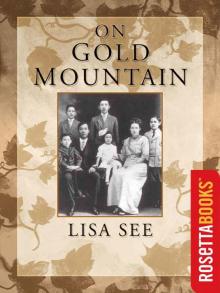 On Gold Mountain: The One-Hundred-Year Odyssey of My Chinese-American Family
On Gold Mountain: The One-Hundred-Year Odyssey of My Chinese-American Family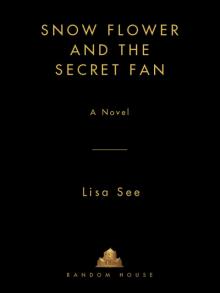 Snow Flower and the Secret Fan
Snow Flower and the Secret Fan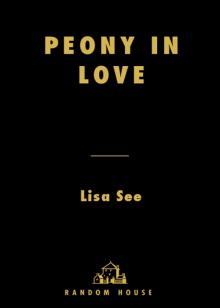 Peony in Love
Peony in Love Flower Net
Flower Net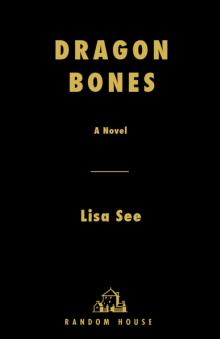 Dragon Bones
Dragon Bones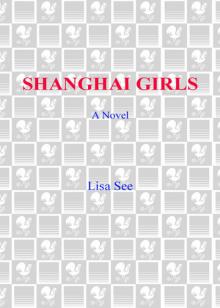 Shanghai Girls
Shanghai Girls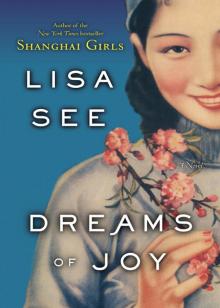 Dreams of Joy
Dreams of Joy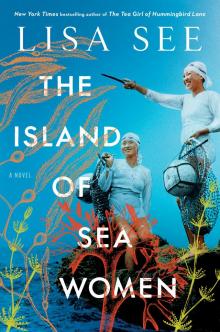 The Island of Sea Women
The Island of Sea Women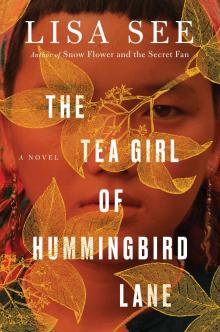 The Tea Girl of Hummingbird Lane
The Tea Girl of Hummingbird Lane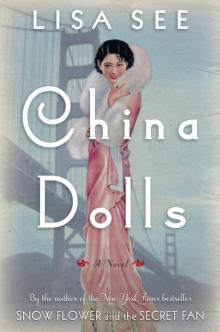 China Dolls
China Dolls The Interior
The Interior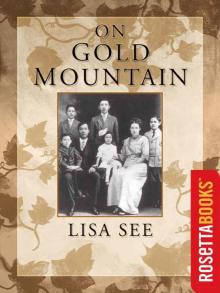 On Gold Mountain
On Gold Mountain